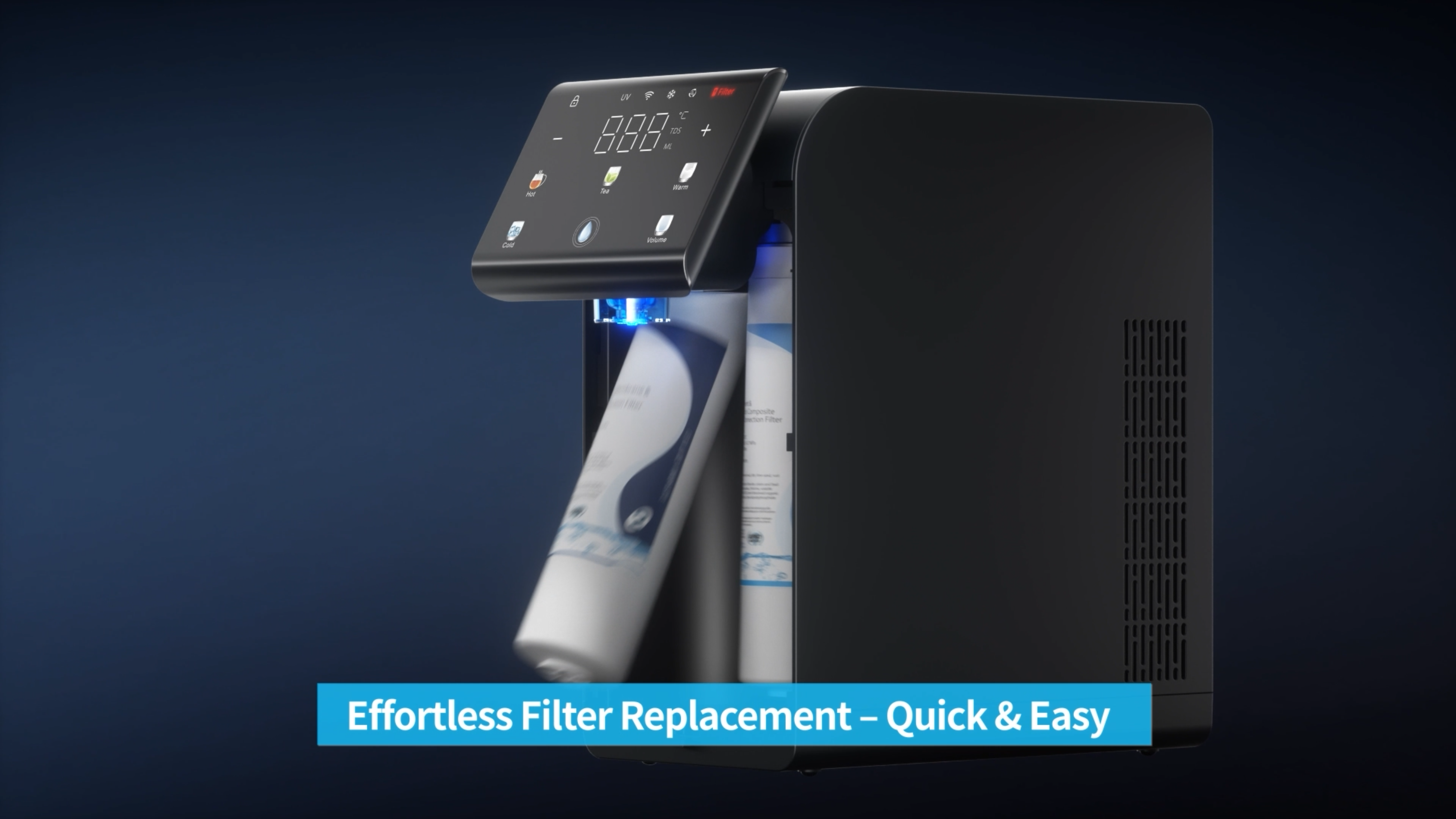 Introduction
Introduction
As smart homes evolve from novelty to necessity, water dispensers are emerging as unexpected linchpins in the connected ecosystem. Beyond mere hydration tools, they now serve as data hubs, health monitors, and sustainability enforcers, seamlessly integrating with other IoT devices to redefine modern living. This blog explores how water dispensers are transitioning from kitchen utilities to intelligent home assistants, driven by connectivity, automation, and a growing demand for holistic smart living solutions.
The Rise of the Connected Dispenser
Smart water dispensers are no longer standalone devices—they’re nodes in a broader home network. Key integrations include:
Voice-Activated Ecosystems: Dispensers sync with Amazon Alexa, Google Home, or Apple HomeKit to respond to commands like, “Alexa, dispense 300ml at 10°C.”
Appliance Interoperability:
Coordinate with smart refrigerators to track household water usage.
Adjust water temperature based on weather data from connected thermostats.
Health Data Sharing: Sync hydration metrics with fitness apps (e.g., MyFitnessPal) to align water intake with diet and exercise goals.
By 2025, 65% of smart dispensers will integrate with at least three other IoT devices (ABI Research).
Core Technologies Driving Connectivity
Edge Computing: On-device AI processes usage patterns locally, reducing cloud dependency and latency.
5G and Wi-Fi 6: Enable real-time firmware updates and remote diagnostics for maintenance.
Blockchain Security: Encrypt user data (e.g., consumption habits) to prevent breaches in shared home networks.
Brands like LG and Xiaomi now embed these technologies in premium models, targeting tech-savvy homeowners.
Smart Dispensers as Sustainability Enforcers
Connected dispensers are pivotal in achieving net-zero home goals:
Water and Energy Optimization:
Use AI to predict peak usage times, pre-cooling water during off-peak energy hours.
Detect leaks via pressure sensors and auto-shutoff valves, saving up to 20,000 liters/year per household (EPA).
Carbon Tracking: Sync with smart meters to calculate the carbon footprint of bottled vs. filtered water, nudging users toward eco-friendly choices.
Health Guardians of the Smart Home
Advanced models now act as early-warning systems:
Contaminant Detection: AI analyzes flow rate and taste sensors to flag impurities (e.g., lead, microplastics), alerting users via app.
Hydration Compliance: Cameras with facial recognition track family members’ intake, sending reminders to kids who skip water breaks.
Medical Integration: Dispensers for elderly care homes sync with wearables to adjust mineral content based on real-time health data (e.g., potassium levels for heart patients).
Market Growth and Consumer Adoption
Residential Demand: Smart dispenser sales in homes grew by 42% YoY in 2023 (Statista), driven by millennials and Gen Z.
Premium Pricing: Connected models command a 30–50% price premium, but 58% of buyers cite “future-proofing” as justification (Deloitte).
Rental Housing Boom: Property managers install smart dispensers as luxury amenities, often bundling them with IoT security systems.
Case Study: Samsung’s SmartThings Integration
In 2024, Samsung launched AquaSync, a dispenser fully integrated with its SmartThings ecosystem:
Features:
Auto-orders filters when supplies run low, using SmartThings’ inventory management.
Syncs with Samsung Family Hub refrigerators to suggest water intake based on meal plans.
Impact: 200,000 units sold in 6 months; 92% user retention rate.
Challenges in a Connected World
Data Privacy Concerns: 41% of consumers fear smart dispensers could leak usage patterns to insurers or advertisers (Pew Research).
Interoperability Fragmentation: Competing ecosystems (e.g., Apple vs. Google) limit cross-platform functionality.
Energy Drain: Always-on connectivity increases power consumption by 15–20%, offsetting sustainability gains.
Regional Adoption Trends
North America: Leads in smart home penetration, with 55% of dispensers IoT-enabled by 2025 (IDC).
China: Tech giants like Midea dominate with dispensers tied to super-apps (WeChat, Alipay).
Europe: GDPR-compliant models prioritize data anonymization, appealing to privacy-conscious markets like Germany.
Post time: May-19-2025

